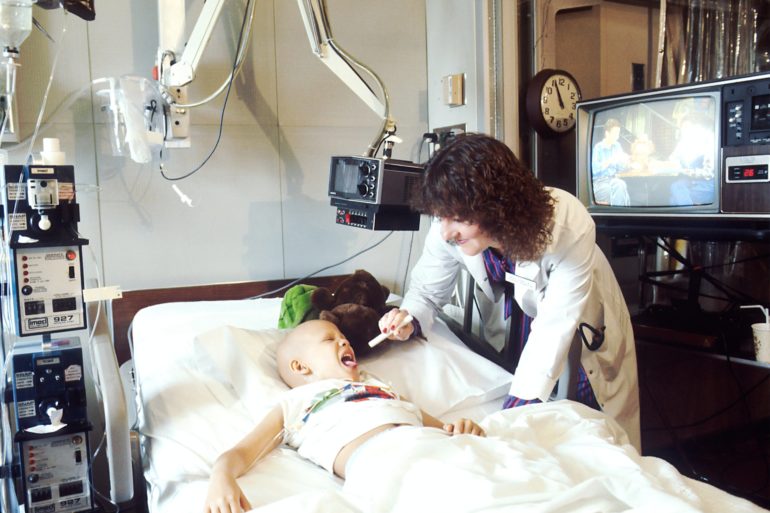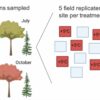In some children with acute myeloid leukemia, cancer cells have as many DNA changes as healthy blood stem cells. Researchers were surprised to find these children have a poorer chance of survival compared with children whose leukemia has an above-average number of DNA changes. Their new study offers insight into how this form of blood cancer can develop in children. In the future, the new findings may help identify which patients have a high-risk form of the disease.
Cancer is caused by mistakes in a cell’s DNA; the longer we live, the greater the chance of such changes. The number of DNA faults gradually adds up as we get older. But children’s cells have relatively few DNA changes—so it is still unclear why children can develop cancer.
In a new study, scientists from the Princess Máxima Center for pediatric oncology looked at the development of acute myeloid leukemia (AML) in children. Some 25 children are diagnosed each year, and in around a quarter of the children the disease comes back after treatment. Better understanding of the causes and underlying biology is needed to improve treatment.
Many more DNA faults
To find out what goes wrong in the DNA of the cancer cells in children, the researchers compared the complete DNA of healthy blood stem cells with that of leukemia cells. They did this with biopsies from the bone marrow of children treated for AML in the Máxima, and internationally available data from 90 children with AML. Their study was published on Thursday 5 August in the journal Blood Cancer Discovery.
“We saw that in some children, the amount and types of DNA changes in leukemia cells was very different from what we see in healthy blood stem cells,” says Dr. Ruben van Boxtel, principal investigator at the Princess Máxima Center. The leukemia cells in these children had many more DNA faults compared to healthy blood stem cells. This increase was due to oxidation, a kind of ‘rusting’ of the DNA that causes damage.
Better chance of survival
The children in this group had a better chance of survival compared to children who had the same number of DNA changes in the leukemia and healthy blood stem cells. “That was surprising,” says van Boxtel, who is also an Oncode Investigator. “DNA changes are what make cancer malignant. With more of these changes, you would expect a worse outcome.” When the team looked into more detail, they found that in these children, AML probably started in more specialized blood cells that are less likely to become malignant.
Easy test
In the future, the amount of DNA faults in blood stem cells could help identify high- or low-risk forms of AML in children, Van Boxtel hopes. “Instead of looking for specific DNA changes, we would then only need to measure the amount and type of DNA damage in the blood stem cells. That is a very easy test, for which we don’t need to draw extra blood.” A lot of further research is still needed, but this is the beginning, he explains. “We are an important step closer to understanding of the origin of AML in children.”
Healthy blood stem cells have as many DNA mutations as leukemic cells
More information:
Arianne M. Brandsma et al, Mutation Signatures of Pediatric Acute Myeloid Leukemia and Normal Blood Progenitors Associated with Differential Patient Outcomes, Blood Cancer Discovery (2021). DOI: 10.1158/2643-3230.BCD-21-0010
Provided by
Princess Máxima Center for Pediatric Oncology
Citation:
Comparing DNA changes in blood stem cells and leukemia cells could help pick out children with high-risk AML (2021, August 6)
retrieved 7 August 2021
from https://medicalxpress.com/news/2021-08-dna-blood-stem-cells-leukemia.html
This document is subject to copyright. Apart from any fair dealing for the purpose of private study or research, no
part may be reproduced without the written permission. The content is provided for information purposes only.



